the Development of fish stocks goes generally in the wrong direction. Since last year the trend has gone down for four of the ten most common matfiskarna according to Fiskguiden, as the world wildlife fund (WWF) every year compiles to help consumers choose fish that are sustainably harvested or farmed.
Freshly caught mackerel. Photo: Joakim Roosthis year the mackerel from the north east ended up among the fish that can be red light, that is to say, ”let it be”.
– the stock has been fished too hard on the makrillbestånden in the north-east Atlantic and, in general, we see that stocks go down. The method that receives red light is garnfiske and there are also problems with marine mammals and seabirds as bycatch, " says Karin Glaumann, an expert on fish at the WWF.
was the MSC certification back from the makrillfisket. The stock level was not longer up to the demands of sustainable fisheries, in addition to catch quotas were much higher than what scientists have recommended. Almost the entire Swedish fishery of mackerel, 95 percent, have been MSC-certified.
– There have been viable alternatives of mackerel for a very long time. Generally, schooling fish like mackerel, herring and herring is a climate-friendly fishing because you can catch and not have to do with so much fuel, " says Karin Glaumann.
Overfishing is also one of the reasons that Nordhavsräkan from southern Norway in the year receives the red light, it means that the shrimp has a red light everywhere except in the Barents sea and at Iceland.
– When it comes to räkfisket we have also have a problem with the draft of the shrimp, throw back the small shrimp, which is illegal. This must overcome, control needs to be strengthened, " says Karin Glaumann.
Nordhavsräkan that fished in the waters off the coast of southern Norway will get the red light. Photo: Julia Mordshould be sustainable next year, 2020. But in the present situation, the targets are far from reached. According to the WWF, for example, overfishing is still very large; 40% of overfishing in the north Atlantic, 50% in the Baltic sea and 90% in the Mediterranean.
– We have one year left to achieve goals, with that in mind, you had desired that everything in the guide was on the green light, but it is not. On the contrary, we are seeing a deterioration of certain stocks, and many species remain in the red as pike, walleye and whitefish.
There has been a lack of political will
" There has been a lack of political will. We have made a review, which showed that of the 46 measures in international fisheries policy is the only one that has been implemented, and it is an administrative measure. Here you have to really switch up the work, if one is to achieve the goal that we have set up, " says Karin Glaumann.
that fish stocks are under threat due to the quotas is determined is greater than what scientists recommend, but there are more contributing factors.
– There are also a lot of poaching. It is very important to have an effective control on the legal framework are adhered to. Where can you find the eel as an example, where there are still extensive poaching. Last year, the Marine and water authority of over 200 gear used illegally.
the Cod caught in the Norwegian sea and the Barents sea have previously had the green light, the ”best choice”, but in this year's guide, it will be yellow light, ”be careful”. Here it is not so much the stock as the shortcomings in the management and to the quotas set higher than scientific advice, in addition, there are the shortcomings of by-catch and how much young fish that are brought up.
– the Situation for cod is of concern, it also applies to the Baltic sea, last year, it was a red light. Now we're talking about the collapse.
a cod or other fish with a good conscience should, according to the guide, choose those which are certified in some form MSC, ASC or Requirements.
For a few of the species are no viable alternatives, it comes to eel, shark (dogfish), skate and red snapper, and for them, they should be avoided completely.
But all is not bleak. There are fish that shows a positive trend, for example, plaice, witch flounder, and turbot in the Skagerrak, Kattegat and the North sea. On the other hand, trålad plaice from the Baltic sea red light.
Half of the fish eaten worldwide comes from fish farms, Sweden is 60% wild and 40% cultivated. Some of the news in years is the chilean hoki and stillahavskummel that gets the green light in the guide, as well as cardiovascular and clams.
Fishnets. Photo: Karl Nilssonthat the politicians need to act if the fishing is to be sustainable and the goals of sustainability can be reached. Then in January, it is prohibited to dump the fish, throw the catch which you do not want discarded. But if the ban is unclear because not everything is controlled.
– In Sweden there are approximately thirty thousand fishing trips per year, less than one per cent controlled by the coast guard. It is very little. It must be improved, the coast guard must have the resources to do more. We have lifted the technical development, which among other things gives the option to have the camera on board so you can see the catch composition. Then you get to better track than today.
Fiskguiden 2018 – all baltic cod get red light

 Iran-Israel conflict: what we know about the events of the night after the explosions in Isfahan
Iran-Israel conflict: what we know about the events of the night after the explosions in Isfahan Sydney: Assyrian bishop stabbed, conservative TikToker outspoken on Islam
Sydney: Assyrian bishop stabbed, conservative TikToker outspoken on Islam Torrential rains in Dubai: “The event is so intense that we cannot find analogues in our databases”
Torrential rains in Dubai: “The event is so intense that we cannot find analogues in our databases” Rishi Sunak wants a tobacco-free UK
Rishi Sunak wants a tobacco-free UK Alert on the return of whooping cough, a dangerous respiratory infection for babies
Alert on the return of whooping cough, a dangerous respiratory infection for babies Can relaxation, sophrology and meditation help with insomnia?
Can relaxation, sophrology and meditation help with insomnia? WHO concerned about spread of H5N1 avian flu to new species, including humans
WHO concerned about spread of H5N1 avian flu to new species, including humans New generation mosquito nets prove much more effective against malaria
New generation mosquito nets prove much more effective against malaria The A13 motorway closed in both directions for an “indefinite period” between Paris and Normandy
The A13 motorway closed in both directions for an “indefinite period” between Paris and Normandy The commitment to reduce taxes of 2 billion euros for households “will be kept”, assures Gabriel Attal
The commitment to reduce taxes of 2 billion euros for households “will be kept”, assures Gabriel Attal Unemployment insurance: Gabriel Attal leans more towards a tightening of affiliation conditions
Unemployment insurance: Gabriel Attal leans more towards a tightening of affiliation conditions “Shrinkflation”: soon posters on shelves to alert consumers
“Shrinkflation”: soon posters on shelves to alert consumers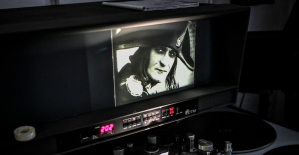 The restored first part of Abel Gance's Napoléon presented at Cannes Classics
The restored first part of Abel Gance's Napoléon presented at Cannes Classics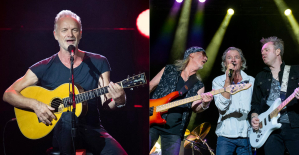 Sting and Deep Purple once again on the bill at the next Montreux Jazz Festival
Sting and Deep Purple once again on the bill at the next Montreux Jazz Festival Rachida Dati: one hundred days of Culture on the credo of anti-elitism
Rachida Dati: one hundred days of Culture on the credo of anti-elitism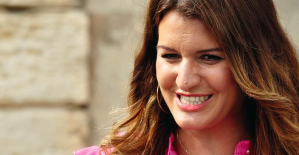 The unbearable wait for Marlène Schiappa’s next masterpiece
The unbearable wait for Marlène Schiappa’s next masterpiece Skoda Kodiaq 2024: a 'beast' plug-in hybrid SUV
Skoda Kodiaq 2024: a 'beast' plug-in hybrid SUV Tesla launches a new Model Y with 600 km of autonomy at a "more accessible price"
Tesla launches a new Model Y with 600 km of autonomy at a "more accessible price" The 10 best-selling cars in March 2024 in Spain: sales fall due to Easter
The 10 best-selling cars in March 2024 in Spain: sales fall due to Easter A private jet company buys more than 100 flying cars
A private jet company buys more than 100 flying cars This is how housing prices have changed in Spain in the last decade
This is how housing prices have changed in Spain in the last decade The home mortgage firm drops 10% in January and interest soars to 3.46%
The home mortgage firm drops 10% in January and interest soars to 3.46% The jewel of the Rocío de Nagüeles urbanization: a dream villa in Marbella
The jewel of the Rocío de Nagüeles urbanization: a dream villa in Marbella Rental prices grow by 7.3% in February: where does it go up and where does it go down?
Rental prices grow by 7.3% in February: where does it go up and where does it go down? With the promise of a “real burst of authority”, Gabriel Attal provokes the ire of the opposition
With the promise of a “real burst of authority”, Gabriel Attal provokes the ire of the opposition Europeans: the schedule of debates to follow between now and June 9
Europeans: the schedule of debates to follow between now and June 9 Europeans: “In France, there is a left and there is a right,” assures Bellamy
Europeans: “In France, there is a left and there is a right,” assures Bellamy During the night of the economy, the right points out the budgetary flaws of the macronie
During the night of the economy, the right points out the budgetary flaws of the macronie These French cities that will boycott the World Cup in Qatar
These French cities that will boycott the World Cup in Qatar Champions League: France out of the race for 5th qualifying place
Champions League: France out of the race for 5th qualifying place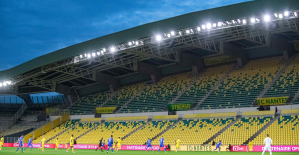 Ligue 1: at what time and on which channel to watch Nantes-Rennes?
Ligue 1: at what time and on which channel to watch Nantes-Rennes? Marseille-Benfica: 2.99 million viewers watching OM’s victory on M6
Marseille-Benfica: 2.99 million viewers watching OM’s victory on M6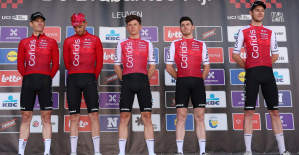 Cycling: Cofidis continues its professional adventure until 2028
Cycling: Cofidis continues its professional adventure until 2028


















